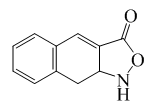| Glehnia | |
|---|---|
 | |
| Scientific classification | |
| Kingdom: | Plantae |
| Clade: | Tracheophytes |
| Clade: | Angiosperms |
| Clade: | Eudicots |
| Clade: | Asterids |
| Order: | Apiales |
| Family: | Apiaceae |
| Subfamily: | Apioideae |
| Tribe: | Selineae |
| Genus: | Glehnia F.Schmidt |
| Species: | G. littoralis |
| Binomial name | |
| Glehnia littoralis | |
| Synonyms [1] | |
| |
Glehnia is a genus of plants in the carrot family, Apiaceae. It is monotypic, being represented by the single species, Glehnia littoralis, [2] commonly known as beach silvertop and American silvertop. The genus was named after Baltic German botanist Peter von Glehn. [3]
